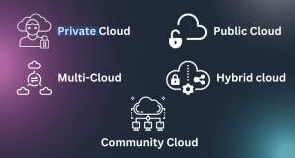The Wells Fargo saga is a tragic example of systemic leadership failure. Excuses offered by top leadership continue to provide rich examples of their failures in serving their customers, their people, their communities, and shareholders.
Unfortunately, as bad as they are, the current data probably only shows part of the problem. There’s probably data from the last several years that will never be presented, reinforcing the awful leadership model set by Wells Fargo top executives.
Too often, blame for performance issues is pushed down the the sales person. We see it in organizations all the time, sales people aren’t performing, sales people are doing the wrong things, sales people are engaging customers incorrectly, sales people have crossed the line and are doing things unethically.
Every large organization will have some small number of sales people that do the wrong things, do them poorly, and even those that cross the line. As much as you try to screen these people in the hiring process, in any large organization, some poor performers or bad people will get through. We address these individual performance problems through coaching and developing the poor performer. Ultimately, if the poor performer can’t meet performance expectations, then that individual has to be moved.
Some of the ethical breaches in the Wells Fargo situation, have to do with “conditions of employment.” These are actions or behaviors that mandate immediate termination. If we are doing the right job in hiring, setting personal examples of proper behaviors, and leadership, these breaches should be very rare (for a deeper discussion of conditions of employment, look at the Sales Manager Survival Guide.).
But 5300? 5300 sales people doing the wrong things, crossing ethical boundaries, and “gaming” their performance metrics by creating false customer accounts, represents systemic failure of management. Failures of this magnitude couldn’t be the result of failures of front line management or sales people, but had to be the results of systemic leadership failure at the very top of the organization.
Let’s be clear, sales people do what they are trained to do, what they are told to do, what they are measured on, and what they are coached to do by management. 5300 people don’t simultaneously, individually or in small groups, start saying, “Let’s open 1.5-2 million false accounts to make our goals.” The only way you get those behaviors across a large number of people, is through the actions of top sales leadership.
I won’t be naive, suggesting management had formal training programs on how to cross-sell and open needless accounts. They weren’t overtly asking their people to open accounts without getting the approval of the account holders. But through small suggestions, winks, conversations starting at the top and cascading through the organization, sales people will “learn” to do what management wants them to do. Top management created the environment that encouraged and enabled these unacceptable sales behaviors. Sales people were just responding to the formal or informal direction of management.
But what if I’m wrong. What if somehow 5300 people across the country decided, independent of management, “Let’s open 1.5-2 million needless accounts, then shut them down before anyone notices.” Let’s imagine something like that could happen. But if it did, how can management not notice the churn? How can management not see the expected fee and revenue increases weren’t being realized?
After all, when one buys and starts using credit cards, you would see increases in revenue from the annual credit card fees, from fees charged to vendors swiping those cards, from interest fees from balances carried by those cards. But, if these accounts are being opened and shut down, without producing those revenues, attentive management would say, “Something seems off here.” Likewise, whatever the banking product sold, there are always revenue streams that are generated from the sale of that product. Yet, those revenue streams weren’t being generated, if the sales people were cancelling the accounts before anyone noticed.
What was management doing? Why weren’t they seeing something just didn’t seem right with what was going on? Again, this isn’t a problem with the sales people, it’s lack of management attentiveness, in this case on a grand scale.
The concept of creating and subsequently cancelling accounts was a meaningless “gaming” of the metrics. It didn’t drive the sustained revenue increases, it just moved money from one place to another and back again. So while sales people were making their cross sell targets, they weren’t growing the business and driving sustained revenue increase from the new accounts. How disconnected with reality does top management need to be to see they were paying commissions and bonuses for behaviors that weren’t driving sustained revenue growth.
We just see the numbers for a very small part of the problem. We know that roughly 1.5-2 millions accounts were created without the approval of the consumer. We know that 5300 sales people were fired because of this behavior. We know that $ 185 million in fines and other charges were levied against Wells Fargo. But there’s a lot more data that would indicate the scale of this leadership failure. For example, what were the voluntary attrition rates–how many people decided to leave because they wouldn’t be a part of this practice? What about involuntary attrition? How many people were fired, because they chose not to do these things, perhaps failing to meet their sales quotas?
We see other indicators of systemic leadership failure at the highest levels. For example, CFO, John Shrewsberry has appeared to blame these bad behaviors on the lowest level employees in interviews with CNBC, the Wall Street Journal and other media. He’s said, “it was really more at the lower end of the performance scale, where people apparently were making bad choices to hang on to their job.” But where is management paying attention to these bad choices and correcting them? Surely, someone in the CFO’s office would have seen the revenue anomalies created by the account churn. Perhaps the $ 100’s of millions this should have created if it were valid behavior was too small in the scheme of the billions the CFO thinks about. But surely someone should have noticed. How can so many bad choices be made on such a broad scale by so many people for at least 5 years?
John Stumpf, CEO, has stated, “To the extent that we don’t get it right 100 percent of the time, ’cause that’s our goal — if we don’t make that plan, I’m responsible. I’m accountable.” Again, there were too many clues and this was done at a such massive level for an extended period of time, how could no one know? Where was top management? Why weren’t they paying attention to this? Why did they never connect the dots to this performance issue?
Or what about the commissions and bonuses paid to people doing this? Where was management paying attention to the churn, where were they in questioning, “Why are we paying for opening new accounts only to see them close after a short period of time?” “Why aren’t we seeing long term growth in accounts and wallet share, in revenues from fees and interest?” Didn’t they recognized the “gaming” behaviors they were encouraging weren’t oriented to improving business results?
Anyway you look at this, it’s systemic leadership failure at a grand scale. We’ll never know whether top management overtly or covertly encouraged and pressured sales people for this type of behavior. We’ll never know whether it was just management not paying attention, ignoring the disconnect between the short term results and the longer term results that were never been realized.
We do know it was systemic, at a grand scale, over a long period of time.
The only thing we can conclude in these types of failures is the fault is with management, not the people. Managers are either not paying attention or encouraging bad behaviors, neither of which is acceptable.
And we see this continued in the statements made by top leaders who continue to blame front line sales people. Real leaders take complete ownership for their actions. Real leaders never create the environment where this could happen in the first place.
Business & Finance Articles on Business 2 Community(50)







